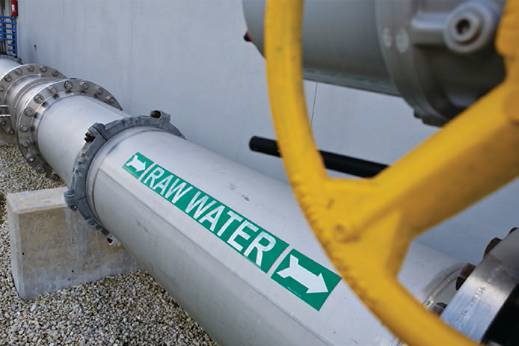The global case for green
Dr. Robert M. Gresham, Contributing Editor | TLT Lubrication Fundamentals December 2010
Good intentions aren’t enough. You must get all parts of your operation working in environmental harmony.
WHAT YOU’LL LEARN
•
Why smart industrial managers think in terms of sustainability and green chemistry.
•
The four key principles to successfully implementing a green strategy in your facility.
•
How a well-meaning operations manager can cause major problems and add significant costs to the waste-treatment process.
"Green” has pretty well taken over our conscious lives. Everyone, at least in the reasonably industrialized nations, is embracing the green culture on some level.
Sure, there are plenty of environmental wackos of whom my father would say, “I could throw a dog through the cracks of their reasoning.” However, smart industrial managers think in terms of sustainability and so-called green chemistry.
Remember, sustainability is the idea that we need to make our efforts and processes sustainable in the long term. On a theoretical level, the goal is to live off the sun with maximum efficiency. Ideally, we should survive as long as the sun does.
An easier way to look at sustainability is meeting the needs of the present, without adversely affecting the future, to quote STLE-member Jim D’Arcy of GM. Green chemistry is the idea that we design chemical products and processes to reduce or eliminate the use or generation of hazardous substances. Aside from obvious toxicity in the definition of “hazardous,” we also can include a reasonable level of biodegradability or at least reduce the hazards to the environment. The concepts of sustainability and green chemistry must involve global cost-competitiveness. Global here means not only geographically and geopolitically but also from a total systems perspective that is consistent with productivity and profitability.
Properly managing fluids and waste streams is an opportunity to maximize profitability, internalize the environmental culture and enhance the company’s green image in the community. With proper attention, waste and fluid management can be a source of indirect revenue by reducing both new lubricant purchases and the cost of waste treatment, selling certain wastes as boiler fuel, reducing negative environmental impact and eliminating fines and a negative societal image. In other words, a global business case can and should be made for proper fluid and waste management to achieve green goals.
All this sounds good, but note that the following tenets are essential if your program is to work:
1.
A proactive maintenance program must be in place and operating properly. This is important because fixing leaks comes first. This directly reduces new lubricant costs as we decrease waste—plus we protect the environment by reducing pollution load and minimizing employee exposure.
Second, by proactively ferreting out root causes of equipment failures and fixing them, we reduce downtime, the costs of spare parts, overtime, etc. Third, we save the costs associated with manufacturing and shipping new parts, calling people in on overtime to fix broken equipment and so on. All this leads to living more efficiently and, therefore, more sustainably.
2.
A top-down commitment must be made to reducing waste and pollutants, conserving resources and recycling materials at every stage of the product life cycle with the objective of improving the environment at each of these stages. This is pretty self-evident, but the key is that every manager and employee must buy into the concept.
The second part of this is tracking performance; most of these improvements are achieved in small increments, so-called cherry-picking. Do we have a proactive oil analysis program that tells us what we need to know about our fluids in use? Can we extend lube change intervals by modest recycling or refurbishing of the fluid at tank side by filtration, dehydration or another simple process? Can we use a fluid that is more biodegradable or less toxic, which, in turn, puts less load on our waste-treatment budget and reduces health and safety costs related to employee exposure?
The point is, by looking for opportunities at all aspects of the operation, the dividends continually add up to substantial cost savings, leading to a more sustainable, greener life as well as improving profitability and productivity.
3.
Whether new, used, refurbished or recycled, only use lubricants or MWFs
meet the specifications for their application. This is a very important.
For example, it is a good idea to reduce inventory costs by consolidating lubricants. It makes sense to recycle or refurbish lubricants to extend their usable life. But it makes no sense to risk a multimillion-dollar piece of equipment using fluids that don’t meet specification. This again goes to the cherry-picking idea—where it works, it works; where it doesn’t, it doesn’t. But at least through a proper risk assessment you can justify the costs in real dollars and cents.
4.
Recycling only makes sense when a
global business case can be made for it. This, too, is somewhat self-evident or should be. By tracking the costs at every stage of the product life cycle, we have a viable tool for measuring the impact of any changes on the whole business. The idea of sustainability is inherently a global concept. Thus, our thinking regarding maintenance and fluid management has to be global as well.
I hope it is clear that a global approach to manufacturing is needed for success. Compromising product quality, machine and tool life, manufacturing productivity and the environment is just not acceptable. Rather, we want to maximize each of these in concert. Whether directly or indirectly, these can be measured by global financial results—the overall system must reduce total cost per unit manufactured to achieve maximum profitability.
All that is fine, well and good, but sooner or later you have to send your spent fluids to the waste-treatment plant. This, too, should be part of our global business case and part of our thinking regarding sustainability and use of green chemistries.

While listening to STLE-member John Burke of Houghton International presenting the Waste Management portion of STLE’s Metalworking Fluids certificate course, I was struck by another indirect factor impacting the cost of waste management. This has to do with managing the chemistries of the fluids and additives used in our processes to minimize negative impact on the waste-treatment system operation and costs.
One of the more common and cost-effective waste-treatment systems is chemical treatment. This involves separating waste oil from water through chemical additions to achieve precipitation and flocculation, then settling or flotation of oil-containing wastes. These wastes then are removed by filtration or drawing off the concentrate from either the bottom or the surface, depending on the nature of the waste.
All too many plant operations people are not particularly aware of the issues affecting the operation of the waste-treatment plant. This is especially the case when multiple waste streams from a wide variety of operations are dumped into the treatment system. Thus, a well-meaning operations manager can inadvertently cause the waste treatment plant manager major problems and add significant cost to the overall operation of the plant.
In chemical treatment of waste, we are basically reversing everything we have done to make the fluids we are using stable—this is a key concept. In the waste-treatment plant, we add any of a number of additional chemicals to overpower the chemicals used to stabilize the fluid.
Thus, to the extent that we can use green chemistries in the types of chemicals and the fluids as purchased, or the additives used at the tank side to maintain the fluid life, we reduce the load on the waste-treatment plant and reduce cost. Clearly, this is a balancing act. The more stable the fluid during its use, the longer it lasts and the less frequently we send it to the waste plant.
On the other hand, if the fluid is so stable (not green) that we can’t treat it without resorting to extreme measures, the money we saved in the operations is consumed in the waste-treatment plant, possibly for an overall net loss. Again, this shows the importance of global thinking in our operations. Probably the simplest thing we can do in the plant is use only very good quality water. If the quantity of deleterious ions in the water is low, then we won’t need the quantity of additives to overpower them. With fewer additives, whether green or not, the treatment plant costs less to operate.
Smart managers think in terms of sustainability and so-called green chemistry. Sustainability is the idea that we need to make our green efforts and processes sustainable in the long term. Green chemistry is the idea that we design chemical products and processes to reduce or eliminate the use or generation of hazardous substances. All these efforts only make sense if a global business case can be made. Saving money and improving productivity, safety and profitability all are part of sustainability thinking.
 Bob Gresham is STLE’s director of professional development. You can reach him at rgresham@stle.org
Bob Gresham is STLE’s director of professional development. You can reach him at rgresham@stle.org.